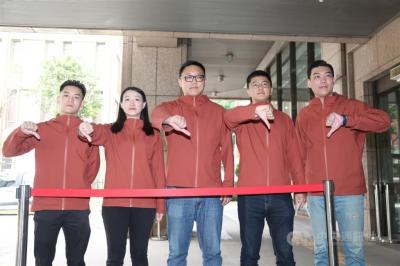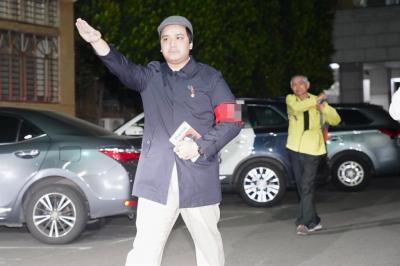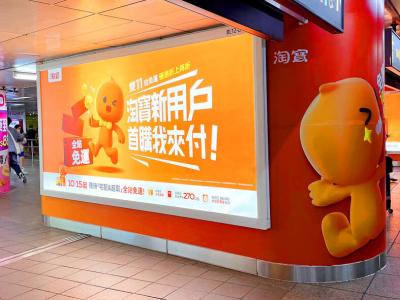Chunghwa Telecom in July received the highest number of complaints among the nation’s telecoms over the communication quality of its services, a report published on Monday by the National Communications Commission showed.
The commission in July received 547 complaints about mobile communication services offered by telecoms, up from 432 in June, it said.
Of those, 191 were over services provided by Chunghwa Telecom, followed by complaints about services offered by Taiwan Mobile at 107 and Far EastTone Telecommunications (FET) at 98, it added.
The number of complaints about the services offered by Chunghwa Telecom, the nation’s largest telecom, rose 31 percent from a year earlier, the commission said.
By contrast, FET, Taiwan Mobile, Asia Pacific Telecom (APT) and Taiwan Star saw the number of consumer complaints drop by 15 percent, 9 percent, 62 percent and 4 percent respectively, it said.
Chunghwa Telecom was also the only telecom in June to experience an increase in the number of complaints, with a 37 percent annual rise, the commission said.
When the ratio of the number of complaints to a telecom’s number of subscribers was examined, Taiwan Star topped the list with 35 complaints per million subscribers, while APT had 32 complaints per million subscribers and Chunghwa Telecom had 18 complaints per million subscribers.
Sixty-six percent of the total complaints were related to communication quality, the report showed.
Chunghwa Telecom also topped this category, receiving 141 complaints about its communication quality, 103 of whom were related to its voice communication service, rather than data communication service.
Carriers that have secured spectrum to develop 5G services are building base stations, but Chunghwa Telecom received the most complaints, the commission said.
The report also examined the time that each carrier took to handle and resolve the complaints.
On average, it took FET 13.6 days to address a complaint, the longest among all five carriers.
Chunghwa Telecom offered the fastest response to consumer complaints, addressing them within an average of 8.4 days.
Regarding the complaints over its communication quality, Chunghwa Telecom said that its 5G base stations are being built alongside existing 4G stations.
The entire 4G system has to be rewired and reactivated to start the 5G stations, which leads to an intermission of about 10 to 15 minutes, it said, adding that it would try to schedule construction work for off-peak hours and avoid having multiple simultaneous constructions within the same area.
Chunghwa Telecom chairman Hsieh Chi-mau (謝繼茂) said in an interview last month that the company saw its broadband service usage rate rise 30 percent during the COVID-19 pandemic, as more people stayed at home to access audiovisual content rather than going out.
This could cause subscribers to sometimes experience a slow transmission speed, he said.
The telecom has also told the media that it is building the nation’s only C-RAN network, an energy efficient system that would significantly reduce its maintenance costs and prevent a network problem from disrupting its entire system.

Taiwan is stepping up plans to create self-sufficient supply chains for combat drones and increase foreign orders from the US to counter China’s numerical superiority, a defense official said on Saturday. Commenting on condition of anonymity, the official said the nation’s armed forces are in agreement with US Admiral Samuel Paparo’s assessment that Taiwan’s military must be prepared to turn the nation’s waters into a “hellscape” for the Chinese People’s Liberation Army (PLA). Paparo, the commander of the US Indo-Pacific Command, reiterated the concept during a Congressional hearing in Washington on Wednesday. He first coined the term in a security conference last

Prosecutors today declined to say who was questioned regarding alleged forgery on petitions to recall Democratic Progressive Party (DPP) legislators, after Chinese-language media earlier reported that members of the Chinese Nationalist Party (KMT) Youth League were brought in for questioning. The Ministry of Justice Investigation Bureau confirmed that two people had been questioned, but did not disclose any further information about the ongoing investigation. KMT Youth League members Lee Hsiao-liang (李孝亮) and Liu Szu-yin (劉思吟) — who are leading the effort to recall DPP caucus chief executive Rosalia Wu (吳思瑤) and Legislator Wu Pei-yi (吳沛憶) — both posted on Facebook saying: “I

Sung Chien-liang (宋建樑), who led efforts to recall Democratic Progressive Party (DPP) Legislator Lee Kun-cheng (李坤城), was released on bail of NT$80,000 today amid outcry over his decision to wear a Nazi armband to questioning the night before. Sung arrived at the New Taipei District Prosecutors’ Office for questioning in a recall petition forgery case last night wearing a red armband bearing a swastika, carrying a copy of Adolf Hitler’s Mein Kampf and giving a Nazi salute. Sung left the building at 1:15am without the armband and covering the book with his coat. Lee said today that this is a serious

The Ministry of Economic Affairs has fined Taobao NT$1.2 million (US$36,912) for advertisements that exceed its approved business scope, requiring the Chinese e-commerce platform to make corrections in the first half of this year or its license may be revoked. Lawmakers have called for stricter enforcement of Chinese e-commerce platforms and measures to prevent China from laundering its goods through Taiwan in response to US President Donald Trump’s heavy tariffs on China. The Legislative Yuan’s Finance Committee met today to discuss policies to prevent China from dumping goods in Taiwan, inviting government agencies to report. Democratic Progressive Party Legislator Kuo Kuo-wen (郭國文) said